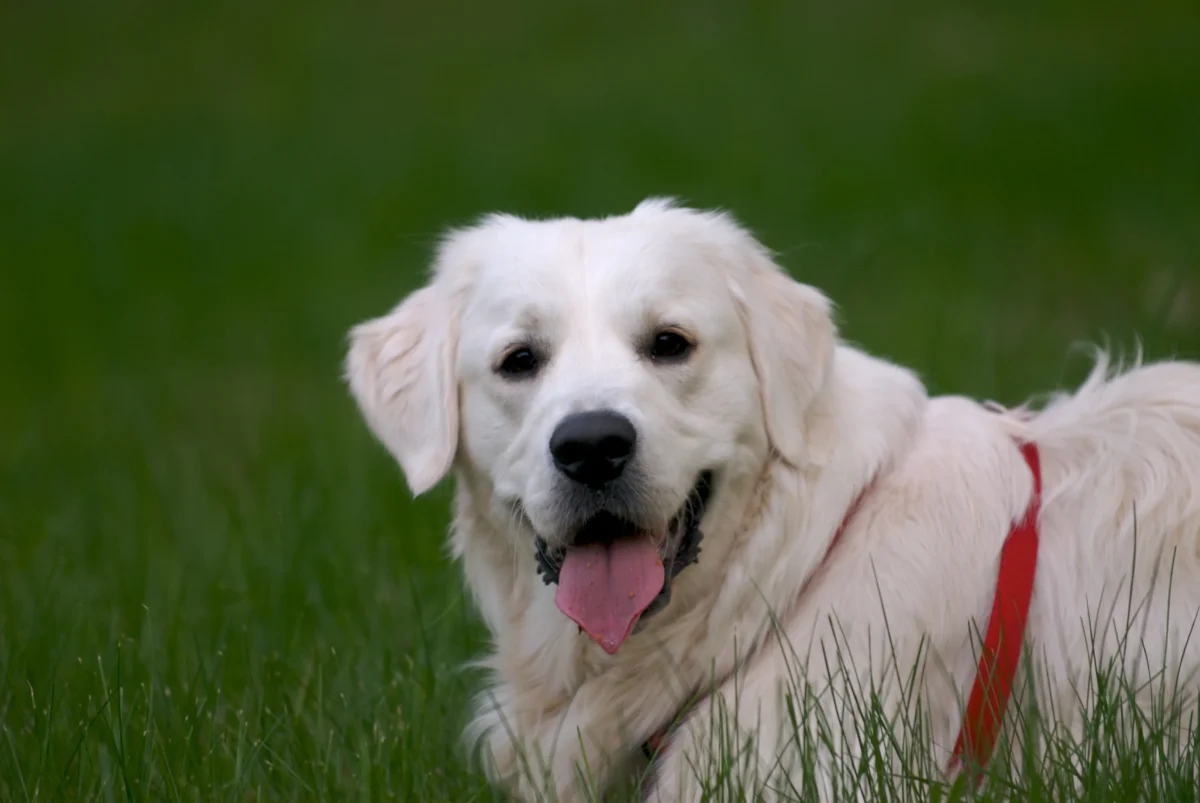If you’re a proud owner of a golden retriever, you may be wondering what diseases this beloved breed is prone to. Golden retrievers are generally healthy dogs, but like any other breed, they can be susceptible to certain health conditions. In this article, we’ll explore some of the common diseases that golden retrievers may develop during their lifetime. By being aware of these potential health issues, you can take proactive steps to keep your furry friend happy and healthy for years to come.
Golden retrievers are known for their friendly and outgoing personalities, but they are not immune to health problems. One of the most common diseases that affect golden retrievers is hip dysplasia. This condition occurs when the hip joint doesn’t develop properly, causing pain and mobility issues. Another health concern for this breed is cancer, with lymphoma being one of the most prevalent types. Additionally, golden retrievers are also prone to certain eye conditions such as cataracts and progressive retinal atrophy.
Common Diseases in Golden Retrievers
As a dog lover and someone who has worked in animal shelters and veterinary offices, I understand the importance of keeping your furry family members healthy and happy. Golden retrievers are generally healthy dogs, but just like any other breed, they can be prone to certain health conditions. It’s always a good idea to be aware of these potential issues so you can take proactive steps to ensure the well-being of your beloved golden retriever or Goldendoodle. Here are some common diseases that golden retrievers may develop:
1. Hip Dysplasia: This is a genetic condition where the hip joint doesn’t develop properly. It can lead to arthritis and joint pain, making it difficult for your dog to move around comfortably. Regular exercise, maintaining a healthy weight, and proper nutrition can help manage the condition.
2. Cancer: Unfortunately, golden retrievers have a higher risk of developing cancer compared to some other breeds. Lymphoma, a type of cancer that affects the lymph nodes, is particularly common in golden retrievers. Early detection and prompt treatment are crucial for a better prognosis.
3. Eye Conditions: Golden retrievers are prone to several eye conditions, including cataracts and progressive retinal atrophy (PRA). Cataracts can cause cloudiness in the lens of the eye, leading to blurred vision or even blindness. PRA is a degenerative disease that can result in a gradual loss of vision. Regular eye exams with a veterinarian can help catch these conditions early on.
Remember, these are just a few examples of the diseases that golden retrievers may develop. Regular veterinary check-ups, a balanced diet, and plenty of exercise are crucial in maintaining your dog’s overall health. By staying informed and taking proactive steps, you can help keep your furry friend happy and healthy for years to come.
1. Hip Dysplasia
As a dog lover and owner of a golden retriever and a Goldendoodle, you know how important it is to keep your furry friends healthy and happy. Golden retrievers, in particular, are prone to certain health conditions that can affect their overall well-being. One common health issue that golden retrievers may develop is hip dysplasia.
Hip dysplasia is a condition that affects the hip joints of dogs. It occurs when the hip socket and the thighbone don’t fit together correctly, causing the joint to become loose or unstable. This can lead to pain, lameness, and difficulty walking or running.
Some important things to know about hip dysplasia in golden retrievers are:
- Genetic Predisposition: Golden retrievers have a higher risk of developing hip dysplasia due to their genetic makeup. It’s important to be aware of this and take preventive measures.
- Symptoms: Symptoms of hip dysplasia can range from mild to severe and may include limping, reluctance to move, difficulty getting up, and a bunny hop-like gait. If you notice any of these signs, it’s crucial to consult your veterinarian.
- Diagnosis: Your veterinarian can diagnose hip dysplasia through a combination of physical exams, X-rays, and evaluating your dog’s medical history. Early detection is key to managing the condition effectively.
- Treatment: The treatment options for hip dysplasia in golden retrievers vary depending on the severity of the condition. It can range from pain management with medication and supplements to surgical interventions such as total hip replacement.
- Prevention: While the development of hip dysplasia is influenced by genetics, there are steps you can take to reduce the risk. Providing a well-balanced diet, maintaining a healthy weight, and avoiding excessive jumping or strenuous exercise during the puppy stage are essential preventive measures.
By being aware of the potential health issues that golden retrievers, like hip dysplasia, may face, you can take proactive steps to ensure their well-being. Regular veterinary check-ups, a balanced diet, and appropriate exercise are essential for maintaining their overall health. Remember, early detection and prompt treatment can make a significant difference in your dog’s quality of life.
So, keep an eye on your furry friend, and don’t hesitate to seek professional advice if you notice any signs of hip dysplasia or any other health concerns. Your
2. Elbow Dysplasia
As a dog lover, you want to ensure the health and well-being of your furry companions. When it comes to golden retrievers and Goldendoodles, it’s important to be aware of the potential health issues they may face. One common condition that can affect these breeds is elbow dysplasia.
Elbow dysplasia is a developmental condition that occurs when the three bones that make up the elbow joint don’t fit together properly. Over time, this can lead to joint degeneration, pain, and lameness. While elbow dysplasia can occur in any breed, it is seen more frequently in large and giant breeds like golden retrievers and Goldendoodles.

« Unveiling the Golden Secret: The Must-Know Truth About Grooming Golden Retrievers
Title: “Unbelievable! Discover the Ultimate Guide to Saving Your Precious Golden Retriever After a Devastating Pitbull Attack!” »
So, how can you recognize if your beloved furry friend is experiencing elbow dysplasia? Keep an eye out for signs such as limping, stiffness, or reluctance to use their front legs. You may also notice that they struggle with activities that involve putting weight on their front paws, such as going up and down stairs or jumping.
If you suspect your golden retriever or Goldendoodle may have elbow dysplasia, it’s important to consult with your veterinarian. They can perform a thorough examination and may recommend additional diagnostic tests, such as X-rays or a CT scan, to evaluate the extent of the condition.
Treatment options for elbow dysplasia range from conservative management, such as pain medications and physical therapy, to surgical intervention. The specific treatment plan will depend on the severity of the condition and your dog’s individual needs. In some cases, surgery may be necessary to alleviate pain and improve joint function.
While you can’t prevent elbow dysplasia entirely, there are steps you can take to reduce the risk or manage the condition. Maintaining a healthy weight for your dog is crucial, as excess weight can put additional stress on their joints. Additionally, providing a balanced diet and avoiding excessive running or jumping during their puppy stage can help minimize the risk of joint issues.
By being proactive and attentive to your golden retriever or Goldendoodle’s health, you can ensure they live a happy and comfortable life. Regular check-ups with your veterinarian, maintaining a healthy lifestyle, and addressing any concerns promptly will go a long way in keeping your furry friend in tip-top shape. Remember, early detection and appropriate treatment are key for managing elbow dysplasia and promoting their overall well-being.
3. Cruciate Ligament Rupture
As a dog lover who has cared for golden retrievers and Goldendoodles, you know that your furry friends are prone to a variety of health conditions. One such condition that can affect them is cruciate ligament rupture.
Cruciate ligament rupture occurs when the ligaments in the knee joint tear or rupture, causing pain, lameness, and difficulty walking. This is a common orthopedic injury in large breed dogs, including golden retrievers and Goldendoodles.
The cruciate ligament is responsible for stabilizing the knee joint and preventing excessive forward movement of the tibia (shinbone) in relation to the femur (thighbone). When the ligament is damaged, the knee joint becomes unstable, leading to pain and discomfort for your furry friend.
So, what causes cruciate ligament rupture? Well, it can occur due to a sudden injury, such as jumping or twisting the leg, or it can develop gradually over time due to wear and tear on the joint. Factors such as genetics, obesity, and age can also increase the risk of this condition.
How can you tell if your golden retriever or Goldendoodle has a cruciate ligament rupture? Look out for these signs:

- Limping or favoring one leg
- Difficulty or reluctance to bear weight on the affected leg
- Swelling around the knee joint
- Discomfort when touched or manipulated
If you suspect that your pet may have a cruciate ligament rupture, it is crucial to seek veterinary care. Your veterinarian will perform a thorough examination and may recommend X-rays or other diagnostic tests to confirm the diagnosis.
Treatment options for cruciate ligament rupture can vary depending on the severity of the injury and your dog’s overall health. Conservative management, such as rest, anti-inflammatory medication, and physical therapy, may be sufficient for mild cases. However, more severe cases may require surgical intervention to stabilize the knee joint and promote healing.
Be proactive in preventing cruciate ligament rupture in your golden retriever or Goldendoodle. Avoid excessive jumping or strenuous exercise, especially on hard surfaces. Maintaining a healthy weight can also help reduce the risk of this condition.
Remember, regular veterinary check-ups and early intervention are key to managing cruciate ligament rupture and ensuring your furry friend’s well-being. By staying informed and taking preventative measures, you can help
4. Progressive Retinal Atrophy
As a proud owner of a golden retriever or a Goldendoodle, there are a few diseases that you should be aware of to ensure the well-being of your furry friend. One such condition that can affect these breeds is Progressive Retinal Atrophy (PRA).

PRA is a degenerative disease that affects the retina, a thin layer of tissue at the back of the eye responsible for vision. It gradually leads to the loss of photoreceptor cells, which are crucial for capturing light and sending visual signals to the brain. Unfortunately, PRA is an inherited disease, meaning it can be passed down from the parents to their offspring.
The first sign that your dog may be developing PRA is typically night blindness. You may notice that your dog has difficulty seeing in dimly lit areas or navigating in the dark. As the disease progresses, your dog’s vision during the day can also be affected, leading to partial or complete blindness.
While there is no cure for PRA, there are steps you can take to help manage the condition and improve your dog’s quality of life. Regular visits to your veterinarian are important for early detection and monitoring the progression of the disease. Your vet may recommend antioxidant supplements or a special diet that supports eye health.
It’s also crucial to provide a safe and familiar environment for your dog, especially if they experience vision loss. Avoid rearranging furniture or introducing major changes that may disorient them. Keep their living space clear of objects they could stumble over, and avoid sudden changes in lighting conditions.
Importantly, if you are considering adding a golden retriever or a Goldendoodle to your family, make sure to choose a reputable breeder who conducts thorough health screenings to minimize the risk of inherited conditions like PRA.

Remember, being aware of the potential diseases that can affect your beloved four-legged friend is key to promoting their overall well-being and ensuring they lead happy and healthy lives.
5. Subaortic Stenosis
As a dog lover and owner of both a golden retriever and a Goldendoodle, you want to provide the best care for your furry companions. In your quest to learn more about their health, you’ve come across a condition called Subaortic Stenosis.
Subaortic Stenosis, also known as SAS, is a heart condition that primarily affects larger dog breeds like golden retrievers and Goldendoodles. It occurs when the area just below the aortic valve narrows, making it difficult for blood to flow properly from the heart to the rest of the body.
Sadly, SAS is a hereditary condition, meaning it can be passed down from parent dogs to their offspring. So, if you’re considering getting a golden retriever or a Goldendoodle, it’s essential to thoroughly research and choose a reputable breeder who conducts relevant health screenings.
While some dogs with SAS may not show any symptoms, others may experience fainting, lethargy, exercise intolerance, or even sudden death. It’s crucial to be aware of these signs and seek veterinary care if you notice any abnormalities in your dog’s behavior or if they seem off.

Once diagnosed, the treatment options for SAS depend on the severity of the condition. Mild cases may require medication to manage symptoms and regular monitoring by your veterinarian. In more severe cases, surgical intervention may be necessary to alleviate the obstruction and improve blood flow.
Prevention is key when it comes to SAS. By choosing a responsible breeder and ensuring they conduct thorough health screenings, you can greatly reduce the chances of your golden retriever or Goldendoodle developing this condition. Regular veterinary check-ups are also essential for early detection and intervention.
Remember, being aware of the health conditions that your golden retriever or Goldendoodle may be prone to is an important part of being a responsible and caring dog owner. By staying informed and taking the necessary precautions, you can help ensure the well-being and happiness of your beloved furry friends.
Conclusion
As you now know, golden retrievers and Goldendoodles are prone to several health conditions. These include elbow dysplasia, cruciate ligament rupture, Progressive Retinal Atrophy (PRA), and Subaortic Stenosis (SAS). SAS, in particular, is a heart condition that can be hereditary and affects larger dog breeds. Look out for symptoms such as fainting, lethargy, exercise intolerance, or sudden death. Treatment options for these conditions can range from medication and monitoring to surgical intervention. To ensure the best possible health for your golden retriever, it’s important to choose a reputable breeder who conducts health screenings and to schedule regular veterinary check-ups for early detection and intervention. By being proactive and informed about the potential health issues that golden retrievers can face, you can give your furry friend the best chance at a long and happy life.







